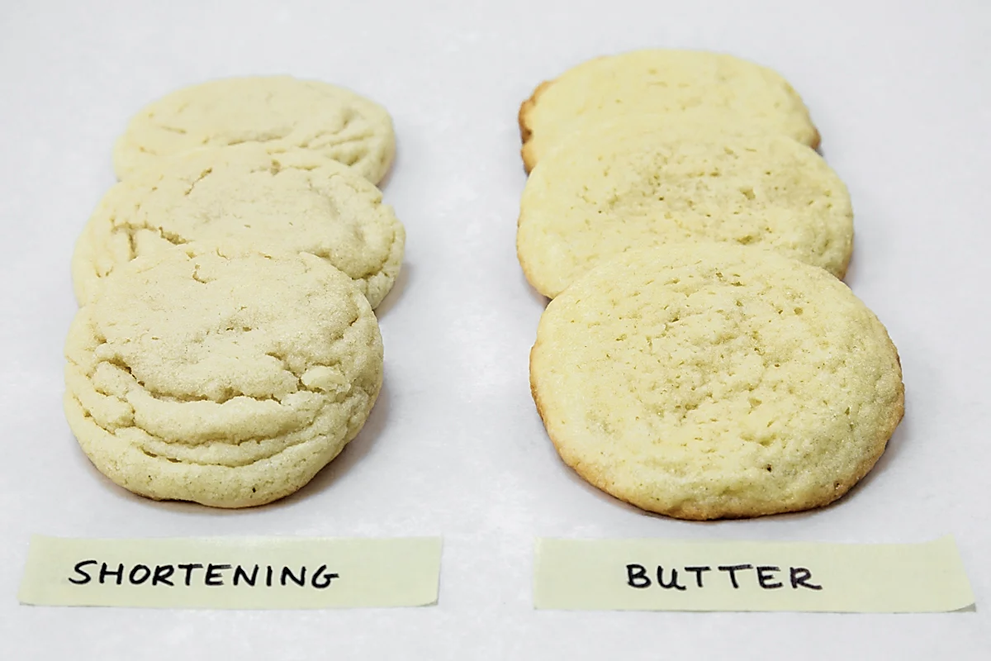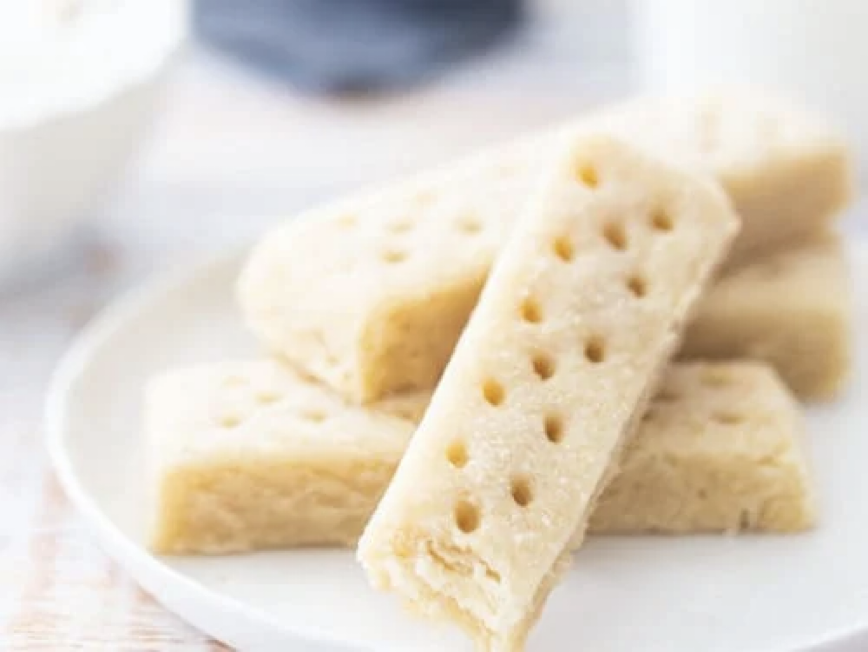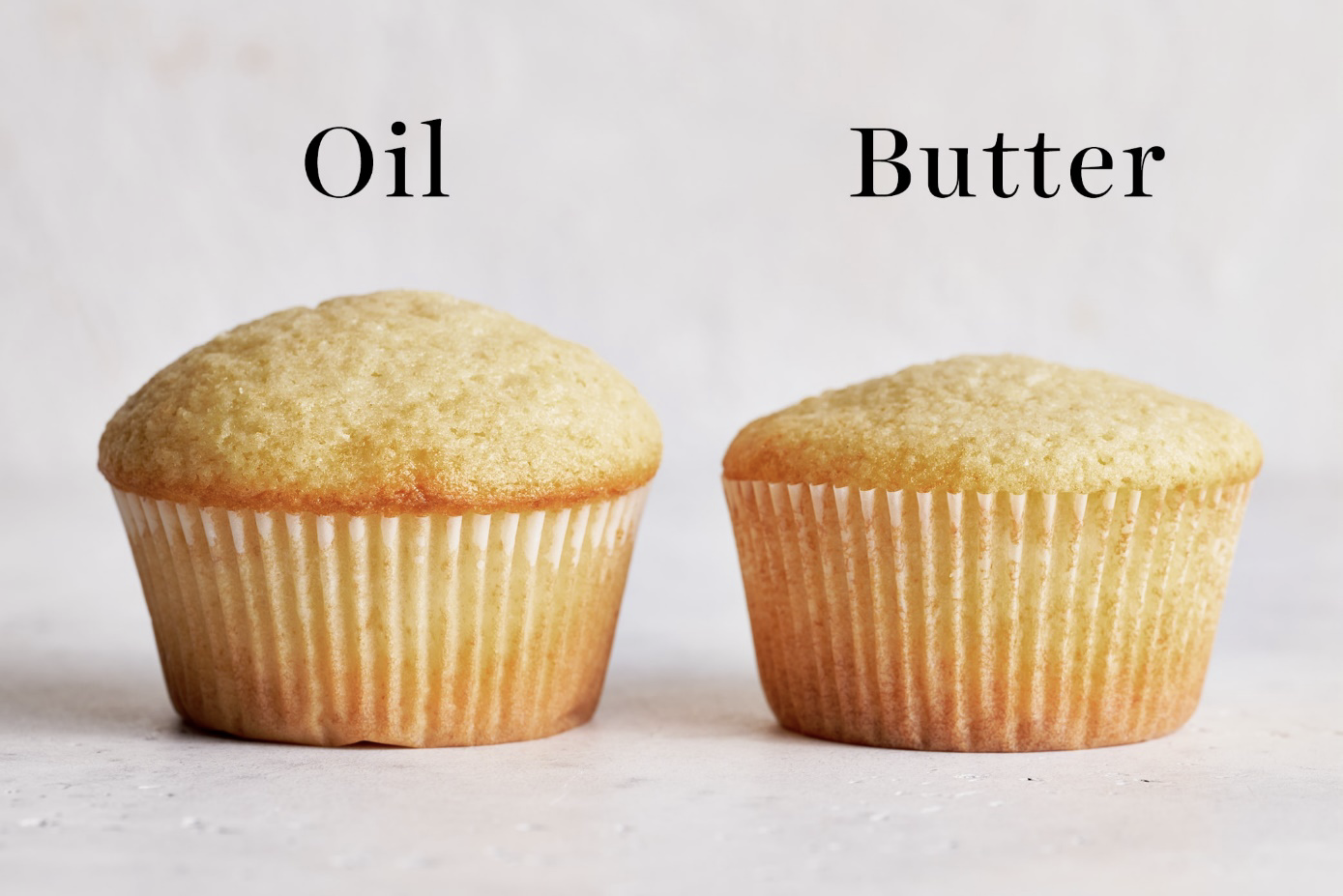Butter, Shortening, and Oil and Their Effects on Baking Outcomes
First let’s compare butter and shortening. They’re both fats, so they have essentially the same job in baking: They tenderize gluten, add necessary moisture, and help bring out certain essential flavors. But according to baking experts, the difference between them is how they get the job done.

Butter, because it contains 20 percent water, adds steam to a baked good. This steam increases gluten production. The increased gluten production yields a crispier and flakier final product. And, because butter melts quicker than shortening, it can yield a flatter and thinner baked good. Butter also has a distinct taste impact taste. It adds a creamier, richer flavor to baked goods.
Shortening, made from vegetable oils, is 100 percent fat. Because there's no water in shortening, there's no gluten-producing steam. This lack of steam impacts texture: Baked goods made with shortening are typically softer and more tender than those made with butter. And because shortening has a higher melting point and doesn’t spread as much, baked goods tend to be slightly taller. And because shortening has no flavor, a finished product’s flavor isn’t impacted at all.

A common baking question our readers ask is “Can one be substituted for the other?” Professional bakers all say “YES!” If you want a dairy-free version of something, shortening is typically used in place of butter. Or which one you use may be just a matter of preference or which one you have on hand. But either will work well.
Do be aware, though, that swapping will yield different texture results. And if taste and texture are key aspects of a product (such as in shortbread cookies), then you wouldn’t want to trade shortening for butter.

If you do decide to substitute, use the same amount called for in your recipe—you want a one-to-one swap. If your recipe calls for salted butter, then just add a pinch of salt to the shortening for a closer match.
Professional bakers also explain that it’s often a great idea to blend the two. Combining them can result in a soft-yet-flaky, best of both worlds situation.
Oil is an unsaturated fat (as compared to butter, which is saturated), and behaves MUCH differently than butter and shortening. Butter and shortening, being solid at room temperature, make a great base for recipes which require creaming the fat and sugar. Many cakes and cookie recipes require this creaming step to add air into the batter or dough to assist in leavening for a light and fluffy texture. This can’t be accomplished in the same way with liquid fats (vegetable oils).

While you would never use oil in pie crust or cookies, it does work well in cakes and quick breads. It’s 100 percent fat (no water) and is lighter than butter and shortening. This results in a lighter baked good. And using oil almost always results in a lighter, more tender product.
If you want to substitute oil for butter or shortening in a cake or quick bread recipe, then be sure to slightly reduce the amount of oil by 15% (compared to the original butter or shortening amount). And be aware that using oil gives the palate a sensation of moisture when you bite into your baked good.
 Alice Osborne
Alice Osborne
DVO Newsletter Contributor since 2006
Email the author! alice@dvo.com
Sources:
- www.completelydelicious.com
- www.kingarthurbaking.com
- www.bakingamoment.com
- www.handletheheat.com
